Belted Galloways
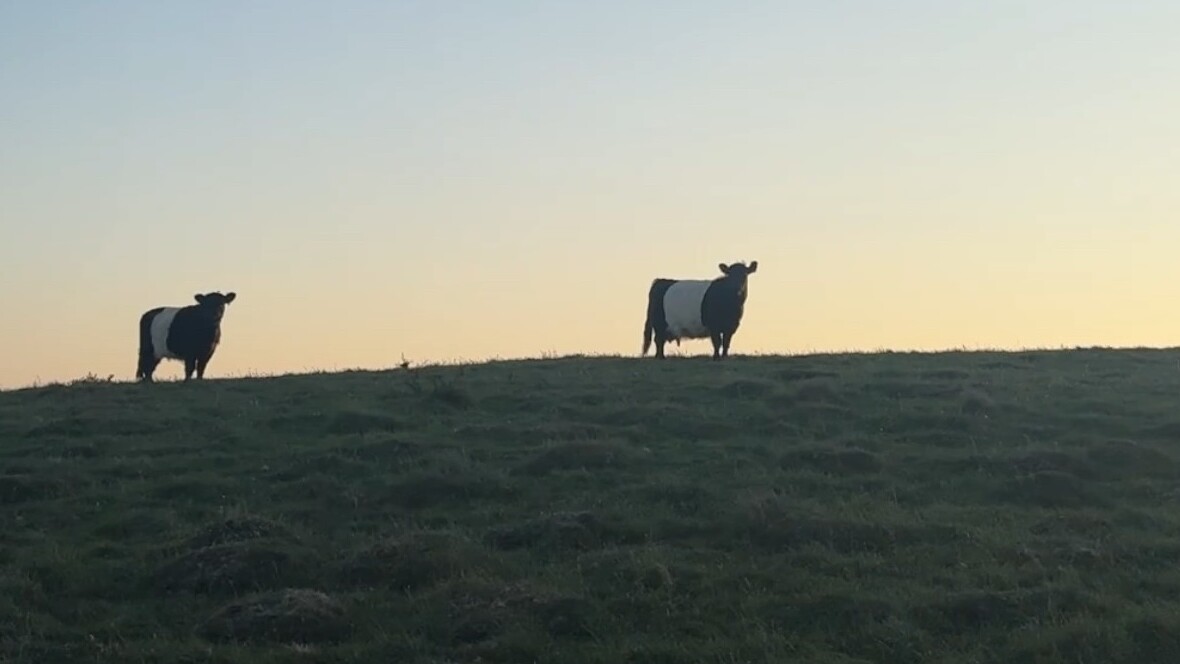
Belted Galloways
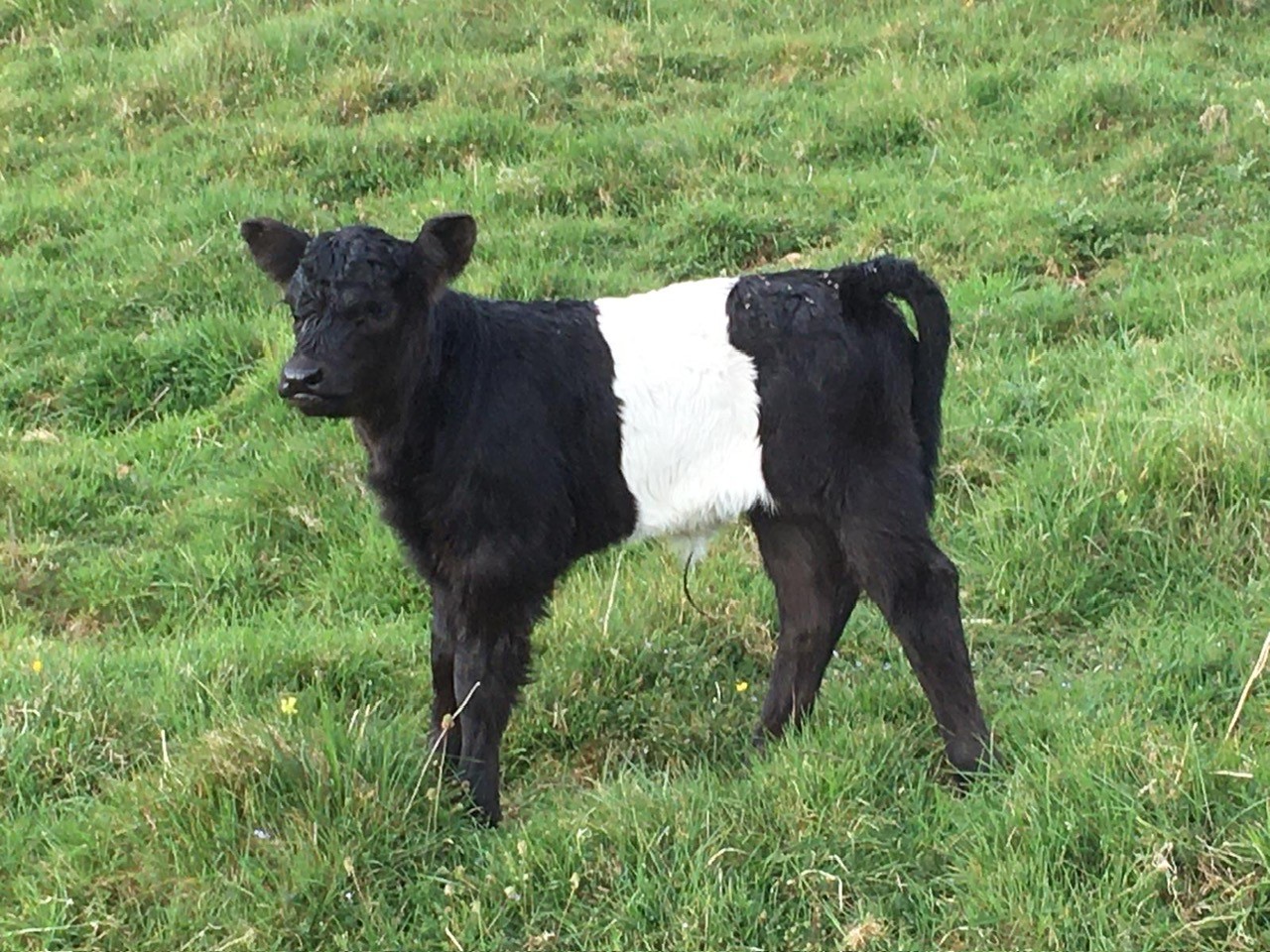
Beacon Hill is always a surprisingly steep climb and however often I clamber up it, it always seems to be further than I thought. The hill is the shoulder of a long chalk escarpment with a more or less north and south trend and I have staggered up it for its glorious view at all times of the year, whatever the weather.
In formal terms, the escarpment is officially described as a calcareous grassland chalk downland habitat which is now rather scarce in southern England. Beacon Hill itself is an irregular summit crowned with the remains of an iron age fort and the tomb of the 5th earl but otherwise, whilst the escarpments may seem featureless with few trees or other features, their beauty lies in their perspectives and the smaller details.
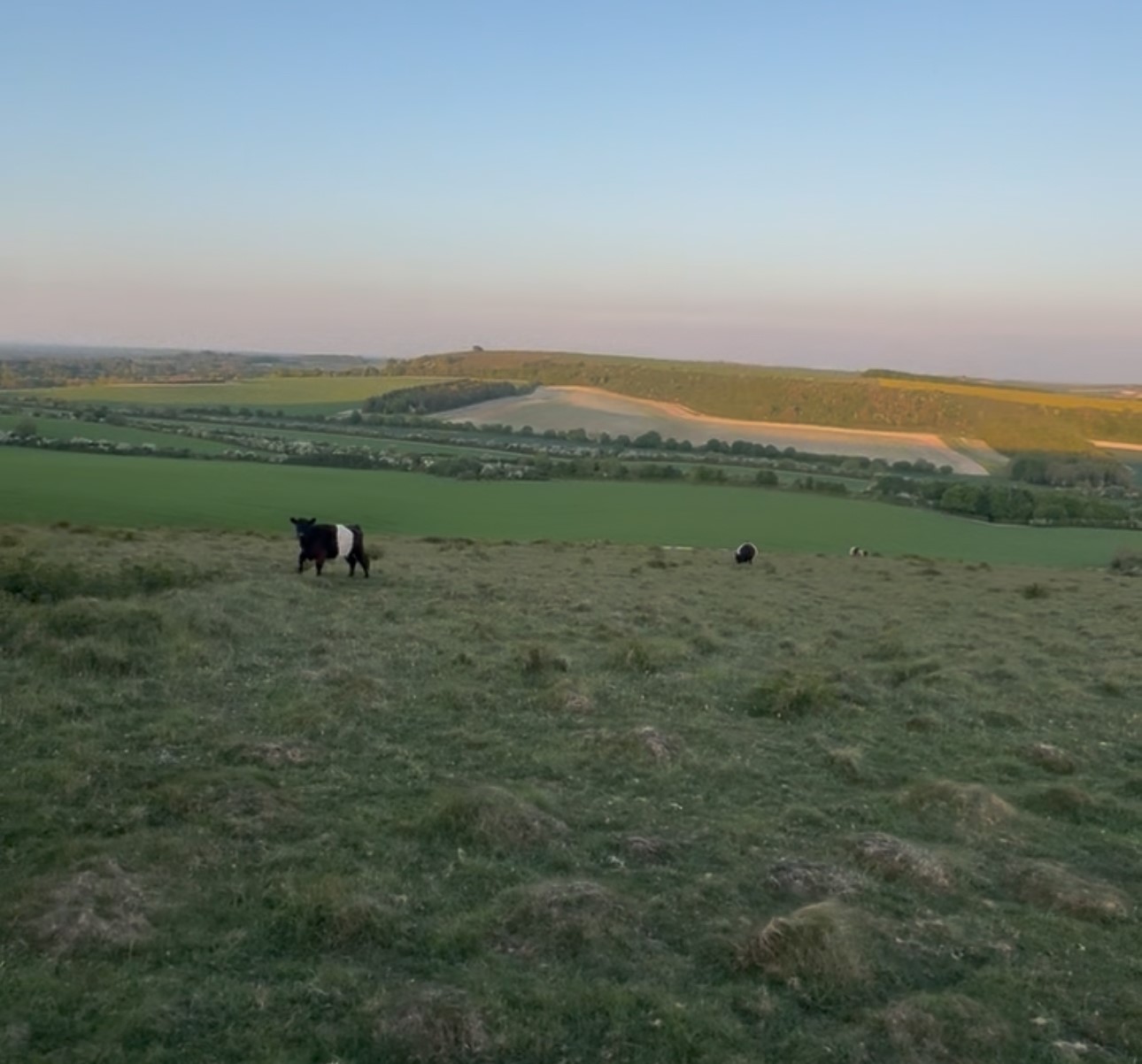
At Highclere, it is home to some rare and unusual species. There is some juniper and scrub but it is also rich in herbs such Festuca ovina and Festuca pratensis and including others such birds’ foot trefoil, chalk milkwort, clustered bellflower, horseshoe vetch...the list goes on. The scents are different and beguiling and the more I wander, the more I see.
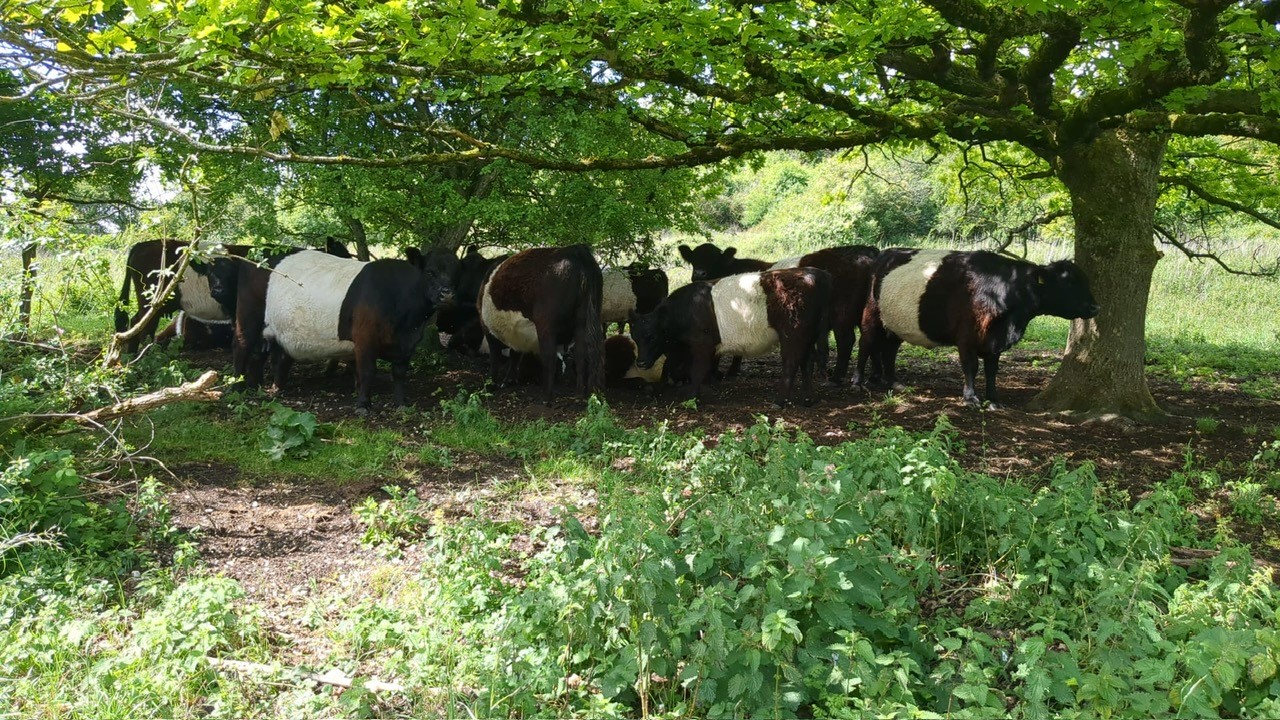
Looking down the long flank, some black and white cattle slowly move across the landscape, tails swinging against the summer flies. They are belted Galloways, black cattle with broad white bands around their backs and tummies.
The varied grazing habits of different animals increases biodiversity. Today, this process may be called rewilding tbut in fact it is just letting cattle graze in low density across broad acres which has been farming practice for centuries. Sometimes sheep also join them and all tread and munch in different ways.

They help us manage the vegetation and their grazing allows vegetation to thrive at different heights and also for small areas of bare ground to develop. In turn, this makes the landscape suitable for a wide range of wildlife in different habitats. Some ground disturbance is beneficial whilst more than 250 species of insect can be found on typical cowpats, which provide a vital source of food for birds.
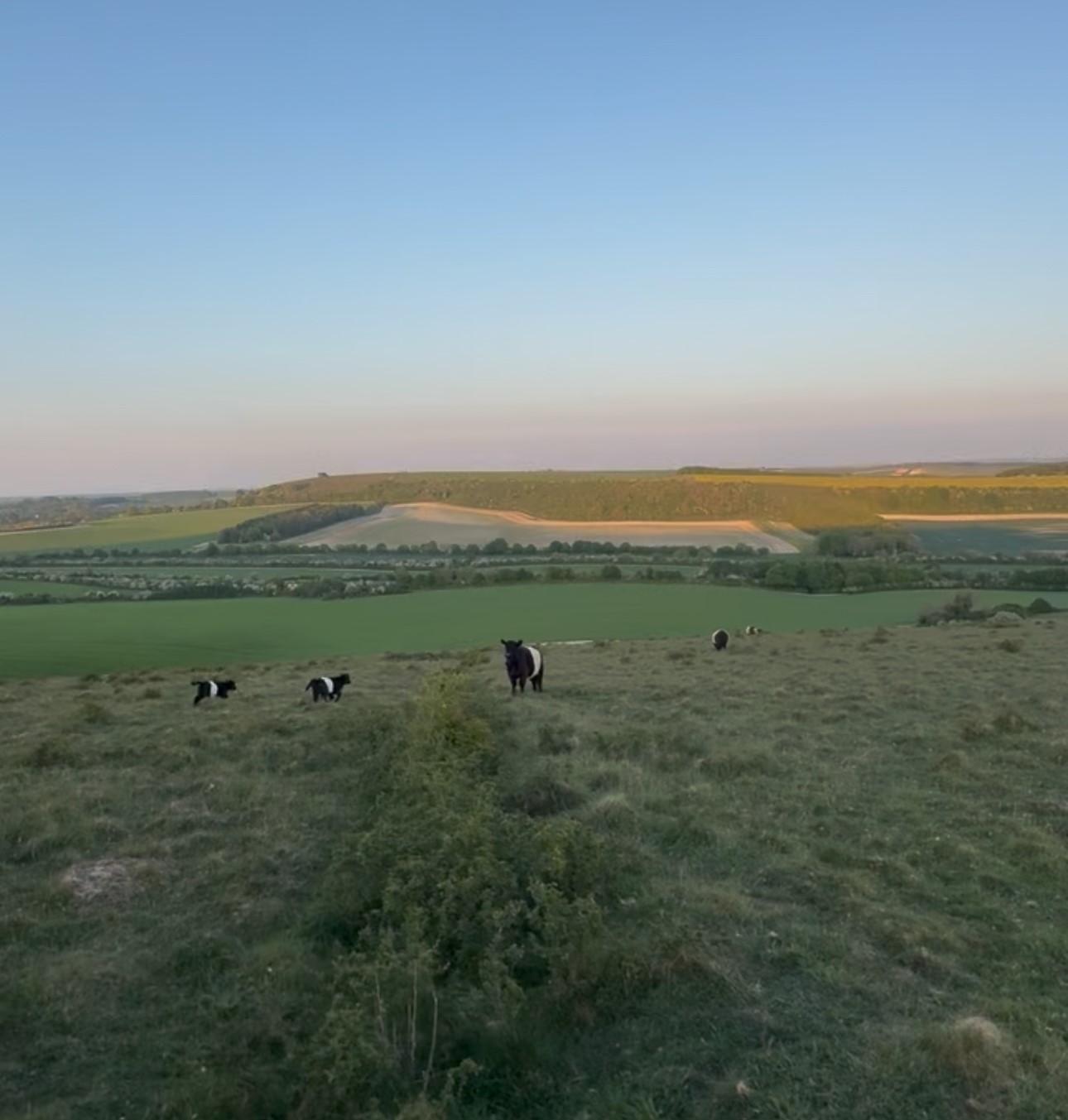
Galloways are a traditional Scottish breed of beef cattle adapted to living on windswept upland pasture. The origin of the white belt is thought to have resulted from some cross breeding with the Dutch “Lakenvelder” in the seventeenth century as shown in Dutch paintings of this time. Laken means linen or cloth and the animals do sometimes look as if they are wearing a scarf.
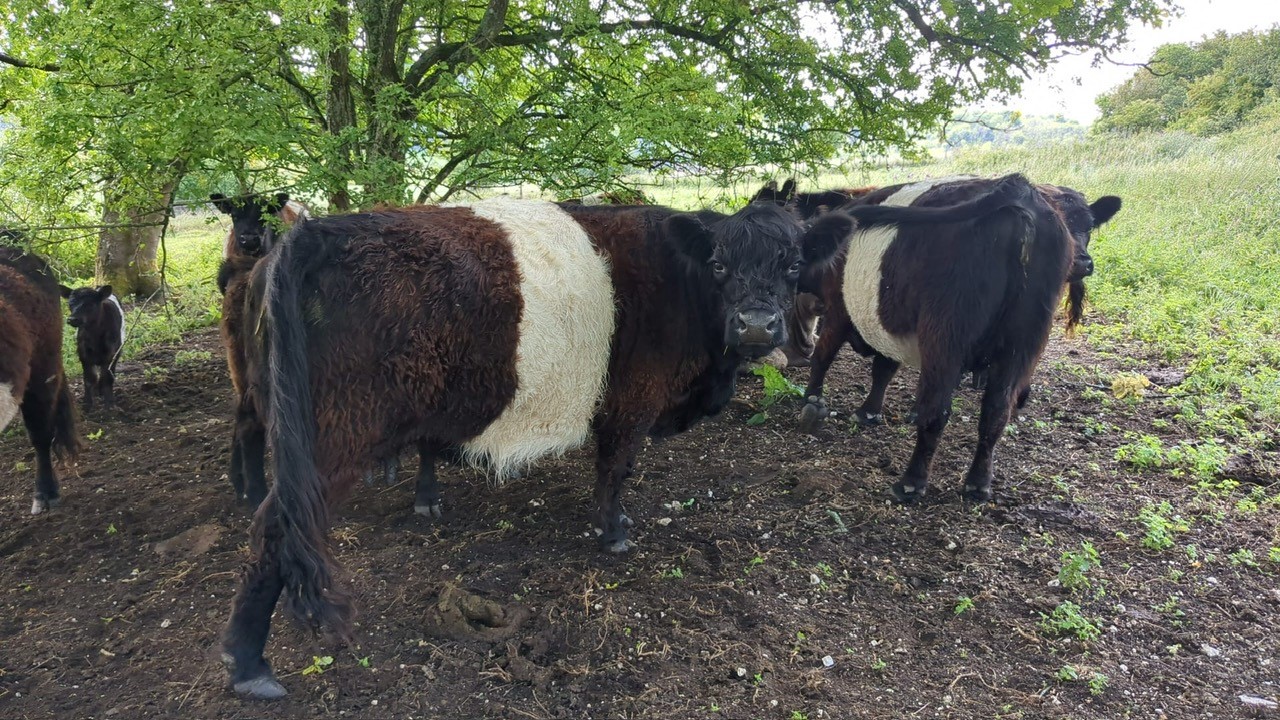
These cows are able to stay outside throughout the year as they have a double coat. There is a long coarse outer coat which gives protection from rain and a fine soft undercoat which keeps each animal warm. As a result, the cattle do not need to develop thick subcutaneous fat for warmth in winter and the meat therefore tends to be lean with higher-than-usual levels of omega 3 polyunsaturated fatty acid.
Watching them potter around looking for their next mouthful to forage, they look rather charming and definitely add to the landscape, bringing the view to life as if they were designed specifically for that purpose.
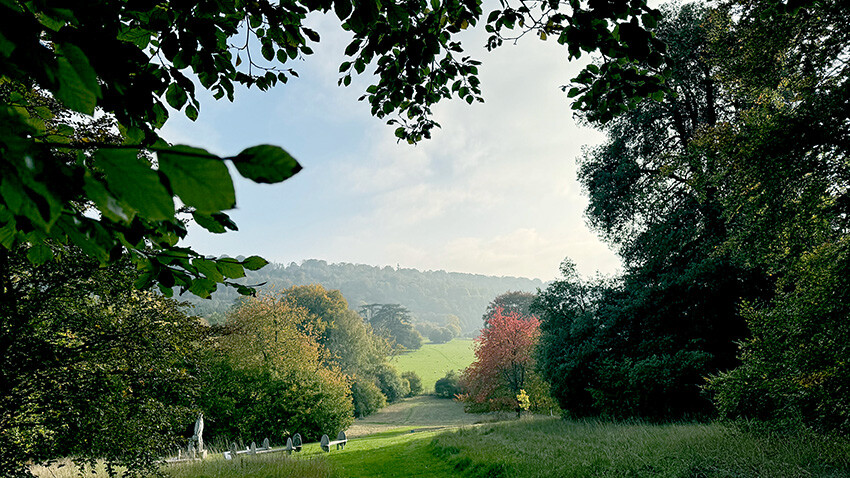
35 Comments
My mother-in-law used to call them “Oreo cows,” after the sandwich cookie!
I always look forward to receiving your blogs on Monday mornings. They help me to start my day off with pleasant thoughts. Thank you for sharing your thoughts.
Good morning from Georgia, USA. We love to see the few Belted Galloway cattle in our travels to the north part of the state. My grand-chickies call them Oreo cows. and enjoy counting how many they see. They are often mixed with other breeds of cattle.
I truly enjoy your blog each Monday and have learned many things from your writings. Kind regards, Becki
Very kind thank you
I live in north Georgia also. Don't you just love anything English and Lady Carnarvon!!!!!
Lovely the belted Galloway did you and lord Carnarvon have a wonderful weekend and I am fan of Downton Abbey and lovely highcelere castle
I have always wondered about this type of cattle because years ago not far from my home in WA state there was a small herd of these. I never knew anything about them.
Now I know! Thank you again for teaching me something new this morning. Your photos of the Belted Galloways in the early morning light are beautiful.
They are very picturesque!!
Lady Carnavorn, we also have these cattle in Maine. We jokingly call them “Oreo” cows as they look like the famous Nabisco cookie. I we will be in England at the end of August through early September but unfortunately it appears that Highclere will not be open for visitors at that time. Maybe next trip. Janet
We are only closed for a few days as we set up for our weekend on Sept 6/7!
Thank you for taking time to mention these beautiful animals. My family raised Brahmans and they are truly the most noble animals
We have a similar breed here in the US. They are called most appropriately "Tootsie Rolls." Happy Monday.
In Alabama, we affectionately refer to these as Oreo cattle. They have the look of the popular Oreo cookie.
I always enjoy reading your weekly column and hope to visit your beautiful home someday.
Lady Carnarvon,
This unusual brand of cattle is so interesting to see roaming across a field. One cannot help but wonder about the mysteries of their coat and how it happened. There’s a village near where I live in North Carolina, Fearrington, where Galloway are raised. Thank you for another interesting story about how Highclere sustains its lanes.
Martha
We never miss a climb up Beacon Hill each time we visit Highclere. Of course the weather always determines the "day" as muck abounds after the rain in the well-travelled spots. We also find that it seems to be longer and higher each time. We plan to take a picnic with us and watch the kites. Maybe we will see your Belted Galloways too!
Hello, Lady Carnarvon — another interesting and informative read. Many thanks! My first glimpse of Belted Galloway cattle happened eight years ago, when I was with a walking group doing the Coast to Coast trail in northern England. That morning we had puffed our way up from Ullswater Lake to the Roman High Street, in the Lake District. In the afternoon we made a long descent to lush, woody pastures along a river, and there were the Galloways with their distinctive look, grazing peacefully. We dubbed them ‘Oreo cows’ because of their dark fronts and backs sandwiching the white ‘frosting’ of their middles. Such a wonderful coast to coast walk that was, full of happy memories for me! Thank you for a happy reminder. Best wishes to you and to Highclere, from the US.
My favourite breed of cattle. Thank you, really interesting as always.
Lady Carnarvon, thank you so much for the insights. I should write a poem about Belted Galloways, amidst the remarkable grasslands.
Tory
The small herd of Belted Galloways in our community is a popular subject for plein air artists not to mention the smiles they bring daily as we pass their pastures. On our next visit to Highclere, we will look for these cousins.
Good morning!! That's beautiful! Thank you!
The Galloways are quite picturesque and their history very interesting, thank you for sharing. In reference to all the insects, does Highclere ever have an ecological survey
done of its meadows to count the insects and wildflowers? I think that would be quite interesting and something visitors would enjoy as well. Continued happy clambering!
We do survey - and we listen and look..
They definitely look like they're wearing scarves. Nothing like that here in Texas. I like knowing that both sheep and these cows share the same space and do so peacefully
Heel erg bedankt! Highclere looks as stunning as ever! Long hikes amount nature are good for the soul. One day, I'll get to visit again. Much love and lots of light ✨️ 💛 to all at Highclere Castle.
May 5th, 2024, I visited Highclere for my first time. A trip of a lifetime that was planned for years prior to leaving our home from Santa Barbara, California - USA. Once there, and upon our departure off of the tour bus at Highclere, I looked up to admire the view and stepped off and rolled my foot. That was the second day of our 20-day European visit. In the current day, I have now healed completely and plan to return in late October to once again view the majesty of your home. I tried to enjoy it through the pain of a broken foot in 2024 and vowed to return to truly enjoy the experience, thoroughly. Thank you for sharing your home with us all. As a friend of Highclere, I truly feel like I will return to the home of a familiar family friend.
Please continue to grace us with your interesting historical tales of Highclere Castle, the photos and information intrigues me to stay loyal.
Blessings,
Dolores Neira
There were red Belted Galloways in western Alberta, Canada, where I was once a beef farmer. I always loved the novel color, which was quite rare Back in the 1980s in Alberta. Thanks for the lovely photos and reminder!
They are absoliutely beautiful. I have always loved cows but these are so so special. Enoy them!
Barbara Ann Dabrowski
Lady Carnarvon, thank you for this post. I truly enjoy seeing the Highclere countryside and its surrounding areas and animals.
Lady Carnavon,
I enjoy reading your insights of the world you live in. You always have a unique perspective.
Thank you for sharing.
Elaine
Lady Carnarvon,
Thank you for this blog! I love the look of these Belted Galloway cows!
I had never heard of them before!
I hope you are enjoying your summer and England's win!
Thank you for highlighting the Belted Galloway breed. I have a farm in Victoria, Australia and have belties. Love their nature, easy to manage and great mothers.
I worked on a farm in Paris, Kentucky, which had the Grand Champion ( US ) Belted Galloway. His name was Baldavar. He was the sweetest bull ever, truly a grand old gentleman
Who knew?! Great story of interdependence of nature.
Here in St Augustine Florida USA we call the the Oreo Cookie cows .. They are so pretty
Thank you a little late reading this week but well worth the read so interesting
One of the most interesting articles thank you. I knew nothing about this breed of cow and to learn about the Dutch element was enlightening. I always find your articles awe inspiring and this one particularly so.
My father loved telling me about the different breeds of cattle. So naturally as an adult, I love them as well. These cows are one of my favorite breeds. You made my day reading your post. You also brought back. Happy memories of times spent with my father. Thank you for that. Your posts are a joy to read and very informative.
it's amazing to me how you are able to make a subject such as cows a fascinating read. My great grandfather owned a cattle ranch in north Sacramento, California. His name was John William Hanner and the Hanner's in our family were of Scottish descent. Grandpa Hanner purchased his Ayrshire dairy cattle from a breeder in Scotland. I'm not sure how they were shipped to California, but he purchased a male and female, and began to breed Ayrshires on his own this was the ranch where my mother grew up. You met my mother in 2017 when we visited Highclere Castle. Your story sparked many memories thank you.
Living in Texas I have seen many different cow breeds, but I have never heard of the Belted Galloway. It was the same with the Highland cow. I fell in love with that cow. I love that both male and female have horns they are distinguished by whether their horns grow up or down. Thank you for introducing me to a new breed of cow. I have been educated.
Leave a Comment
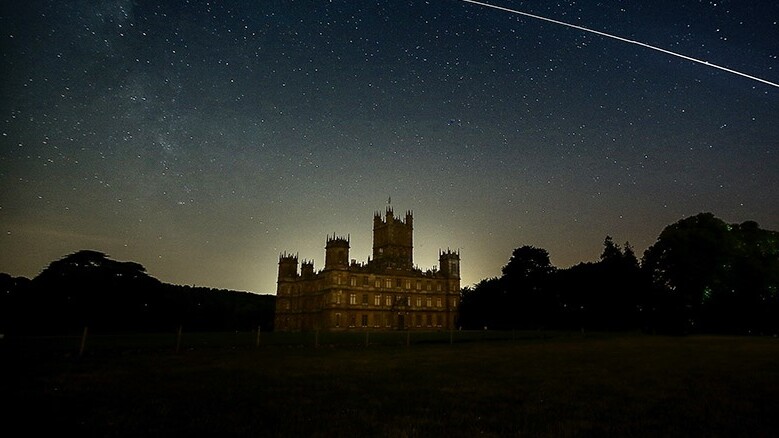
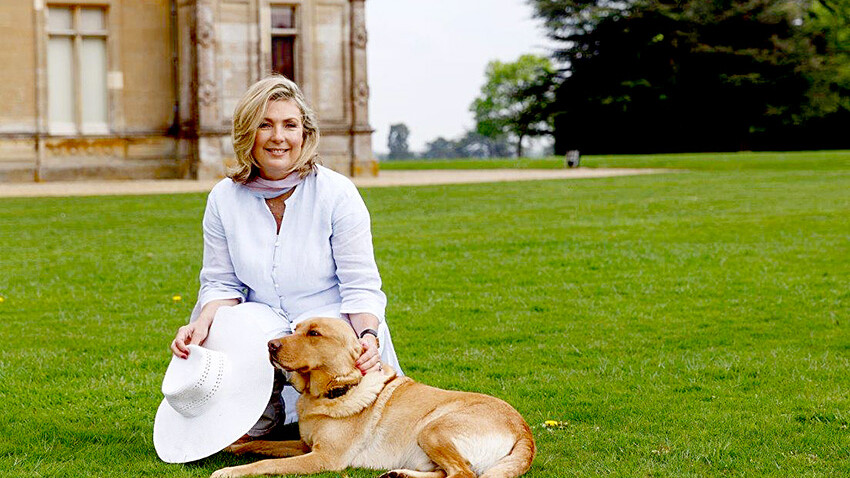
- Christmas
- Community
- Dogs & Horses
- Egypt & Tutankhamun
- Entertaining
- Farm
- Filming
- Gardens
- History & Heritage
- Daily Life
- Royalty
- Cooking
- Interiors
- Heroes
- Architecture
- Cars
- Conservation
- Downton Abbey
- Events
- Gardens & Landscape
- Highclere Castle Gin
- History
- Planes
- Restoration
- Stories & Books
- Uncategorized
- Visitors
- Wildlife

My dearest Lady Fiona.
Good day for you milady.
ABSOLUTILY STUNNING !!!!!
I love hills...
VILA ALEMÃ
RIO CLARO-SP
BRAZIL.